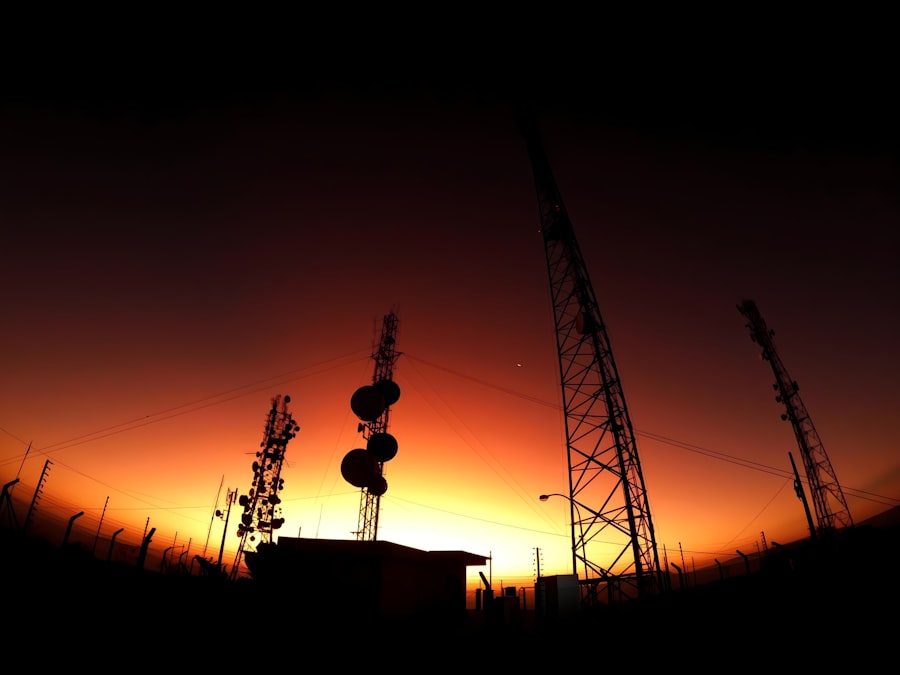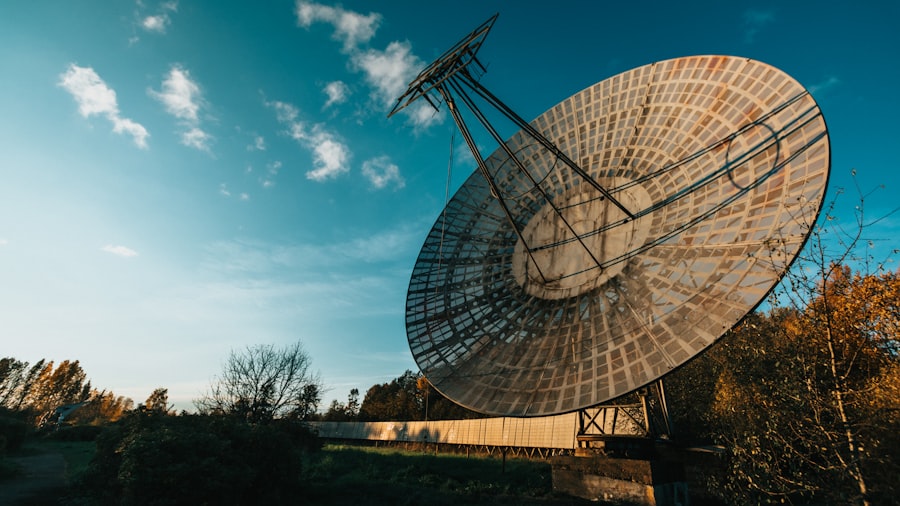International satellite stations play a pivotal role in the modern world, serving as critical nodes in the vast network of global communication and data exchange. These stations facilitate the transmission of information across continents, enabling everything from everyday communications to complex scientific research. The significance of these installations cannot be overstated; they are the backbone of our interconnected society, allowing for real-time communication and data transfer that transcends geographical boundaries.
In an era where information is a key driver of progress, the presence of international satellite stations ensures that nations can collaborate effectively, share knowledge, and respond to global challenges. Moreover, international satellite stations contribute to the advancement of technology and innovation. They provide essential support for various applications, including weather forecasting, disaster management, and environmental monitoring.
For instance, meteorological satellites equipped with advanced sensors relay critical data about atmospheric conditions, which is vital for predicting severe weather events. This capability not only saves lives but also helps economies prepare for potential disruptions caused by natural disasters. The importance of these stations extends beyond mere communication; they are integral to enhancing our understanding of the planet and improving our ability to respond to its challenges.
Key Takeaways
- International satellite stations play a crucial role in global communication, economy, and security.
- These stations work by receiving and transmitting signals to and from satellites in orbit, enabling global connectivity.
- International satellite stations facilitate global communication by providing reliable and widespread coverage, connecting people and businesses worldwide.
- The impact of international satellite stations on the global economy is significant, enabling global trade, financial transactions, and access to information and resources.
- International satellite stations also play a vital role in global security, providing surveillance, monitoring, and communication capabilities for defense and emergency response.
How International Satellite Stations Work
The operation of international satellite stations is a complex process that involves multiple components working in harmony. At the core of this system are satellites orbiting the Earth, which are equipped with various technologies to facilitate communication. These satellites receive signals from ground stations, process the information, and then transmit it back to other ground stations or directly to end-users.
The communication can occur through different frequency bands, such as L-band, C-band, Ku-band, and Ka-band, each serving specific purposes based on the required bandwidth and range. Ground stations are strategically located around the globe to ensure comprehensive coverage and minimize signal loss. These stations are equipped with large antennas that can track satellites as they move across the sky.
When a signal is sent from one ground station, it is relayed to a satellite, which then beams the information to another ground station or directly to users’ devices. This relay system allows for seamless communication across vast distances, making it possible for individuals and organizations to connect regardless of their location. The technology behind these operations continues to evolve, with advancements in satellite design and ground station capabilities enhancing efficiency and reliability.
The Role of International Satellite Stations in Global Communication

International satellite stations are indispensable in facilitating global communication across various sectors. They enable voice calls, video conferencing, and internet access in remote areas where traditional infrastructure may be lacking. For example, in regions affected by natural disasters or conflict, satellite communication can provide a lifeline for humanitarian organizations working to deliver aid and coordinate relief efforts.
The ability to communicate in real-time can significantly enhance the effectiveness of these operations, ensuring that help reaches those in need as quickly as possible. In addition to emergency response, international satellite stations support everyday communication needs for businesses and individuals alike. Companies operating in multiple countries rely on satellite technology to maintain connectivity between their offices and employees.
This is particularly crucial for industries such as aviation and maritime transport, where vessels and aircraft often operate far from terrestrial networks. By providing reliable communication channels, international satellite stations enable businesses to function efficiently and maintain operational continuity even in challenging environments.
The Impact of International Satellite Stations on Global Economy
| Metrics | Data |
|---|---|
| Number of International Satellite Stations | 200 |
| Global Economic Impact | Estimated 500 billion |
| Jobs Created | Over 1 million |
| Technological Advancements | Improved communication and data transmission |
The economic implications of international satellite stations are profound and far-reaching. By enabling seamless communication and data transfer, these stations contribute significantly to global trade and commerce. Businesses can engage in real-time transactions, manage supply chains more effectively, and access markets that were previously unreachable due to geographical constraints.
For instance, e-commerce platforms leverage satellite technology to connect buyers and sellers across continents, facilitating international trade that boosts local economies. Furthermore, the presence of international satellite stations fosters innovation by providing researchers and entrepreneurs with access to critical data and communication tools. In sectors such as agriculture, satellite imagery is used to monitor crop health and optimize yields, leading to increased food production and sustainability.
Similarly, industries like telecommunications benefit from satellite technology by expanding their service offerings into underserved regions, thus driving economic growth. The ripple effect of these advancements can be seen in job creation, improved infrastructure, and enhanced quality of life for communities around the world.
International Satellite Stations and Global Security
International satellite stations also play a crucial role in enhancing global security by providing vital information for defense and intelligence operations. Military organizations utilize satellite technology for reconnaissance, surveillance, and communication purposes. Satellites equipped with high-resolution imaging capabilities can monitor troop movements and detect potential threats from adversaries.
This intelligence-gathering capability is essential for national security agencies as they work to protect their countries from various risks. Moreover, international satellite stations contribute to global security by facilitating cooperation among nations in addressing transnational challenges such as terrorism, drug trafficking, and cyber threats. By sharing intelligence gathered through satellite systems, countries can collaborate more effectively in their efforts to combat these issues.
The ability to communicate securely and share critical information enhances collective security measures and fosters trust among nations.
The Future of International Satellite Stations

The future of international satellite stations is poised for significant transformation as technological advancements continue to reshape the landscape of space-based communication. One of the most notable trends is the emergence of mega-constellations—large networks of small satellites designed to provide global internet coverage. Companies like SpaceX with its Starlink project are leading the charge in deploying thousands of satellites into low Earth orbit (LEO), aiming to deliver high-speed internet access even in the most remote areas.
As these mega-constellations become operational, they will revolutionize how we think about connectivity. The potential for ubiquitous internet access could bridge the digital divide that currently exists between urban and rural areas or between developed and developing nations. This shift could empower individuals with new opportunities for education, entrepreneurship, and access to information that were previously unavailable due to lack of infrastructure.
Challenges and Opportunities for International Satellite Stations
While international satellite stations present numerous opportunities for advancement, they also face significant challenges that must be addressed to ensure their continued effectiveness. One major concern is the increasing congestion in space due to the proliferation of satellites. As more entities launch satellites into orbit—both governmental and commercial—the risk of collisions increases.
This necessitates improved space traffic management systems that can track objects in orbit and mitigate potential hazards. Additionally, regulatory frameworks governing satellite operations need to evolve to keep pace with technological advancements. International cooperation will be essential in establishing guidelines that promote responsible use of space while ensuring equitable access for all nations.
Addressing these challenges presents an opportunity for collaboration among countries and private entities to develop innovative solutions that enhance safety and sustainability in space operations.
The Environmental Impact of International Satellite Stations
The environmental implications of international satellite stations are multifaceted and warrant careful consideration as we move forward with space exploration and technology deployment. On one hand, satellites play a crucial role in monitoring environmental changes on Earth—tracking deforestation, climate change effects, and natural disasters—providing invaluable data that informs conservation efforts and policy decisions. However, the launch and operation of satellites also have environmental consequences that cannot be overlooked.
Rocket launches contribute to greenhouse gas emissions and atmospheric pollution, raising concerns about their impact on climate change. Furthermore, the accumulation of space debris poses a threat not only to operational satellites but also to future missions aimed at exploring space or addressing terrestrial challenges. As we advance into an era where international satellite stations become even more integral to our lives, it is imperative that we adopt sustainable practices in their development and operation.
This includes investing in cleaner launch technologies, developing strategies for debris mitigation, and ensuring that satellite operations align with broader environmental goals aimed at preserving our planet for future generations.


